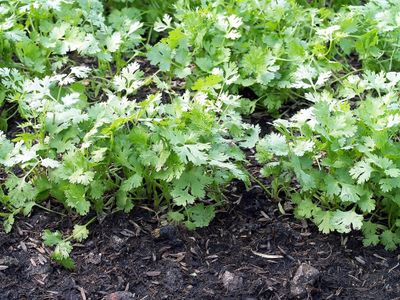What Causes Cilantro with Leaf Spots?
Leaf spot on cilantro is a common bacterial disease favored by cool, damp conditions. Cilantro with leaf spots develop yellowish, water-soaked lesions that eventually turn tan or dark brown. The lesions may become larger and grow together and the leaves become dry and papery. The pathogen responsible for cilantro with leaf spots is Pseudomonas syringae v. coriandricola. Although leaf spot is a common disease that affects many plants, this pathogen affects only cilantro. Leaf spot on cilantro often begins with infected seeds, but the disease is spread by rainwater and overhead sprinklers, which splash the water from plant to plant. It is also transmitted by contaminated tools, people, and animals.
Cilantro Leaf Spot Control
Since control of the disease is difficult, prevention is normally your best course of action in fighting it. Start by purchasing certified disease-free seed and allow at least 8 inches (20 cm.) between plants to provide ample air circulation. If you’re planting cilantro in rows, allow about 3 feet (1 m.) between each. Practice a three year crop rotation to reduce the level of bacteria in the soil, rotating cilantro with members from a completely different plant family. Avoid rotating with any of the following plants:
Cumin Carrots Parsley Caraway Dill Fennel Parsnips
Remove infected plants and plant debris immediately. Never put infected plant matter in your compost pile. Keep weeds under control, especially related plants such as wild carrots, or queen Anne’s lace. Fertilize carefully, as too much fertilizer appears to enhance cilantro leaf spot. Avoid fertilizer with high nitrogen levels. Water early in the day so the plants have time to dry before evening. If possible, water at the base of the plant and minimize use of overhead sprinklers. Avoid working in your garden when the soil is wet. Copper fungicidal sprays may help control the disease if you spray as soon as symptoms appear, but the sprays won’t eradicate leaf spot in cilantro. Experts at your local cooperative extension office can help you select the best fungicide for your situation.
